Are you looking to renovate – or update – your floors? Then you should consider getting natural stone floors. They’re beautiful, easy to maintain, and durable – thus making them perfect for high-traffic areas.
And, if you’re the picky kind, you’ll be glad to know that many types of stone flooring are available. Let’s go through each one of them.
11 Types Of Stone Flooring
1. Limestone
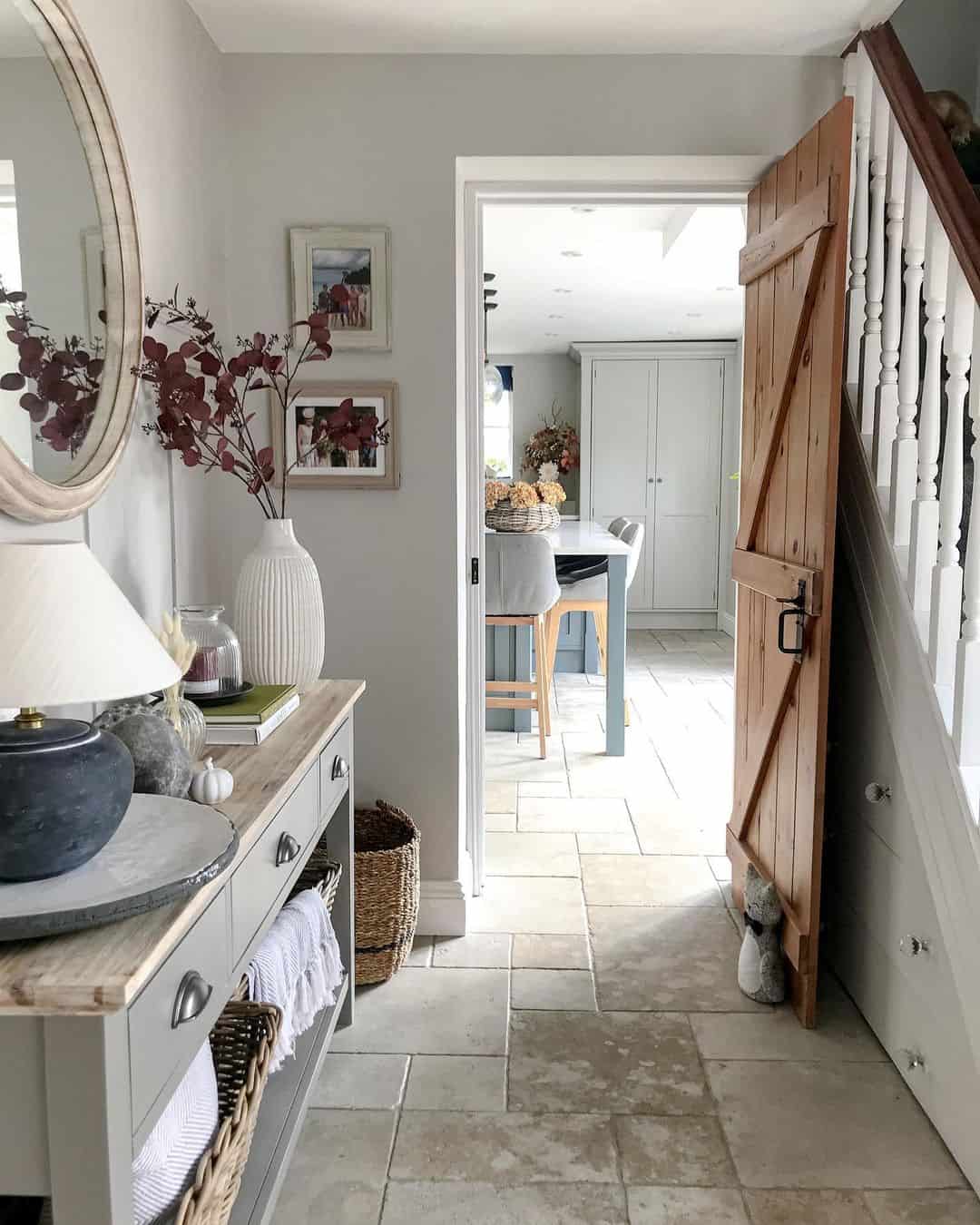
our_kentish_barn
Limestone is a natural stone tile known for its unique veins and bands. Thanks to its homely appearance, it has become one of the more popular flooring options in the market.
Limestone can easily resist bacteria and mold growth, which makes it ideal for bathrooms and patios. They’re easy to clean, though they can stain if you don’t get rid of the spills ASAP.
Limestone is available in a range of colors, textures (smooth or coarse), and densities. As such, you can expect to pay anywhere from $3 to $10 per sq. ft. of limestone flooring.
Remember: the higher density of the flooring, the more durable (and expensive) it is. Lower-density limestones are cheaper, of course, but they can easily break if you drop something heavy on the surface.
2. Sandstone
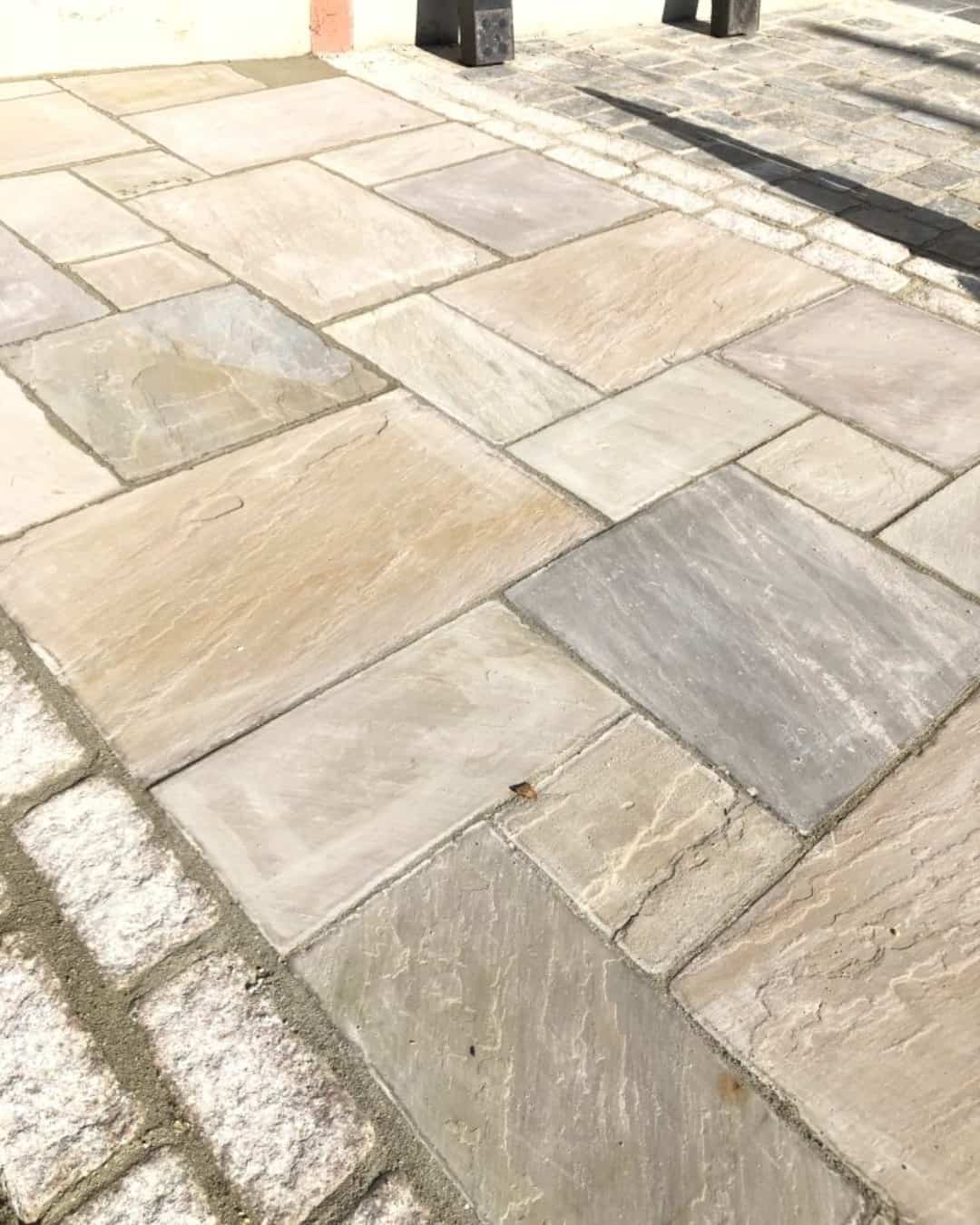
winkleightimber1
Sandstone is a sedimentary stone made from clay and, of course, sand. These make for its earthy colors and unique color bands that make the surface look like wood grains.
As with most types of natural stone flooring, sandstone is quite sturdy. However, it has some porosity. As a soft rock, it can be scratched up quite quickly. Likewise, it’s prone to both staining and weathering.
Sandstone can be slippery when wet, too.
For these reasons, sandstone is not advisable for kitchens and bathrooms.
But even with these limitations, there’s no denying that sandstone makes for a fantastic addition to rustic living rooms and hallways. And it’s sure to meet your budget as well, for it will only cost you about $6 per sq. ft.
3. Slate
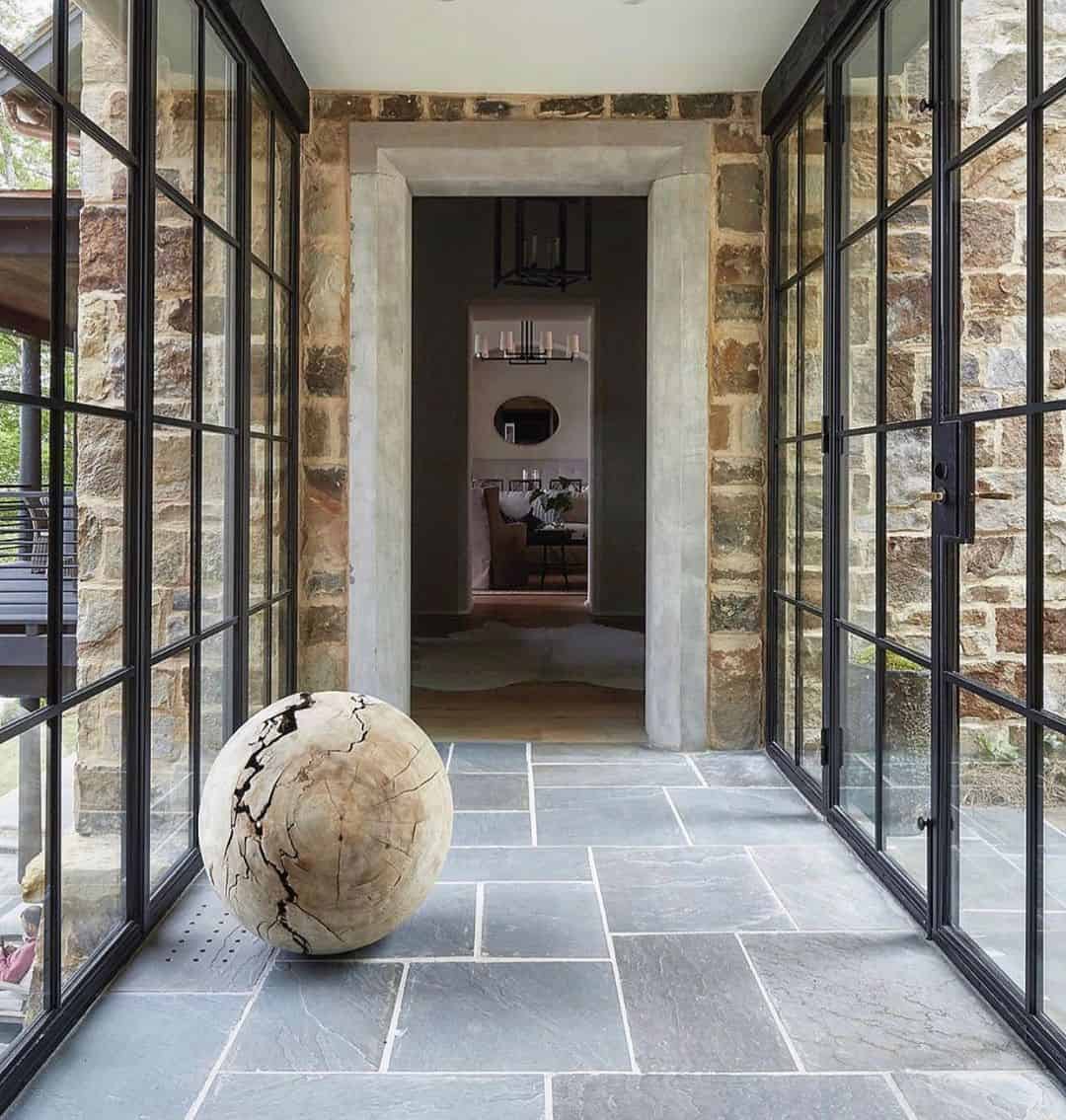
homeonanashvillehill
Slate flooring is another in-demand choice among many homeowners. They’re durable, water-resistant, and undeniably beautiful. They can also conduct heat well, making them ideal for cold areas.
There are two types of slate flooring tiles available in the market, namely calibrated and uncalibrated. Calibrated tiles are leveled so you can install them easily.
The uncalibrated slate tile, however, requires bedding (among many other things.) Since it’s not leveled, it’s best installed by a flooring professional.
While slate is undoubtedly a good flooring option, it needs to undergo routine sealing to prevent stains.
Lower-end models cost $4 to $10 per sq. ft. However, prices are sure to come in higher ($10 to $15 per sq. ft.) if you need a professional to help you.
4. Marble
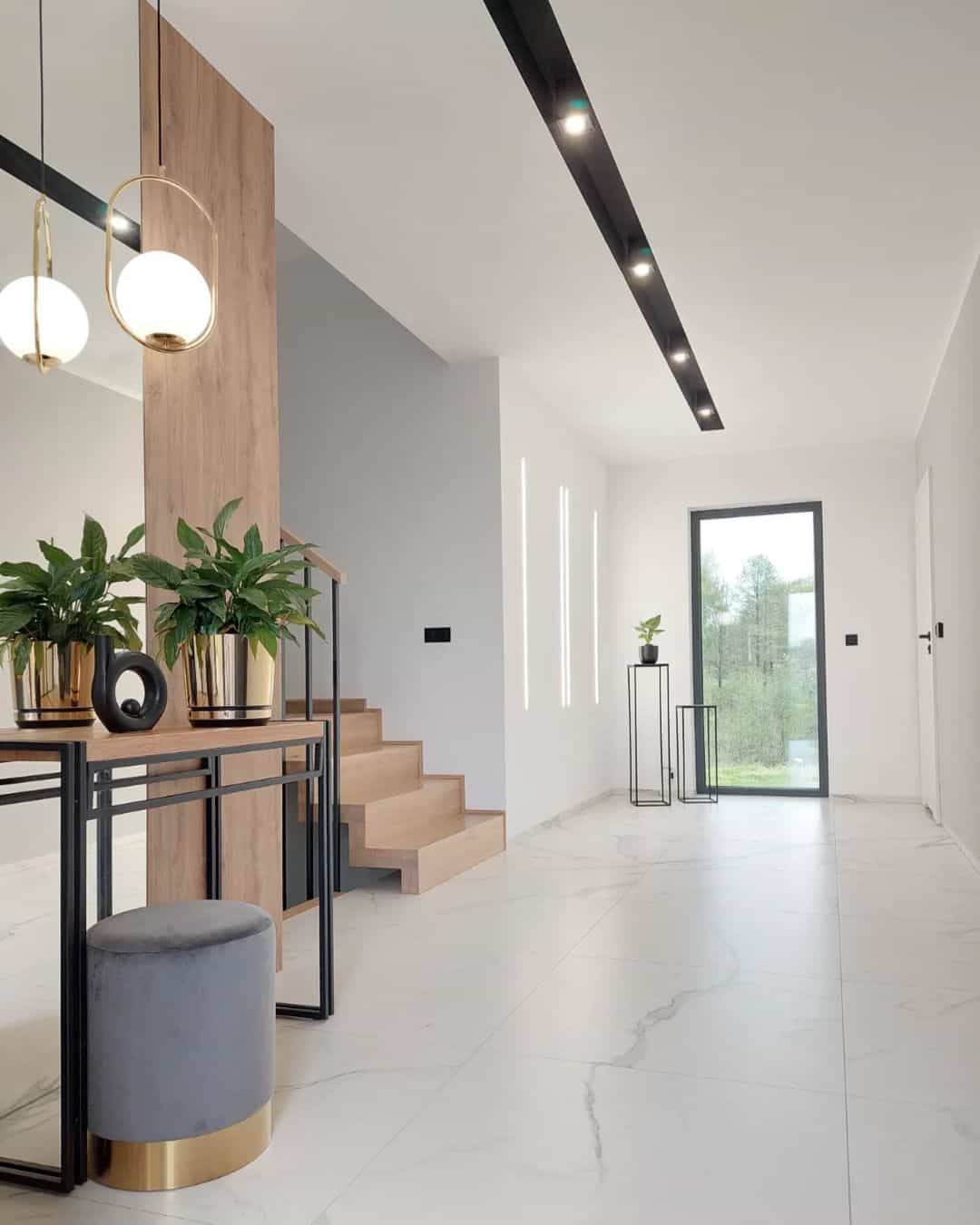
nasze_siedlisko
Marble floors are made from heated sedimentary limestone. And, just like its predecessor, it’s available in several color variations and finishes (matte or shiny.)
While marble is an elegant choice for walkways and bathrooms, it’s not recommended for the kitchen. It is a porous stone, so liquid spills can easily damage it. It’s pretty slippery, and it also scratches and stains easily.
The good news, however, is it’s relatively easy to clean a marble surface.
Marble is quite expensive, for it costs anywhere from $10 to $20 per sq. ft. If you want the top-tier ones, you may have to pay as much as $40 per sq. ft.
5. Granite
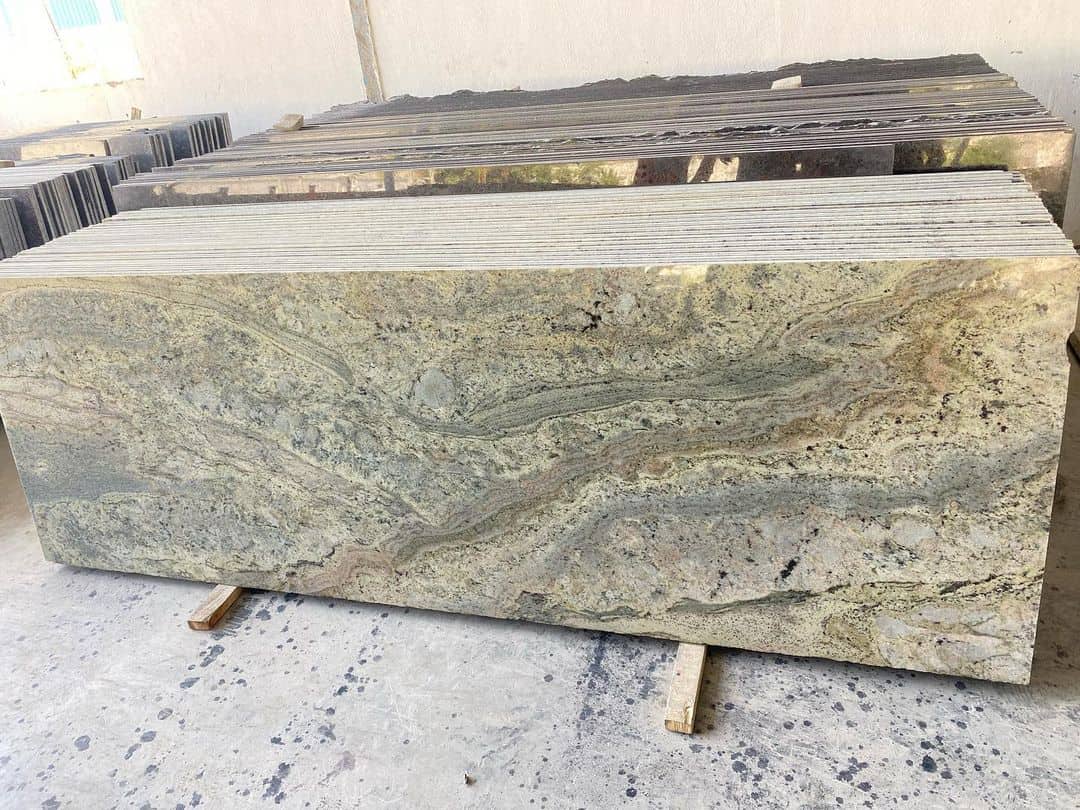
lavanya_granites
Granite is one of the more durable stone flooring types on this list. It’s heat and stain-resistant, thus making it perfect for kitchens, bathrooms, and other high-traffic areas.
Granite flooring is available in the following grades (and prices):
- Low-grade granite. This requires plywood to generate more strength, but it’s generally affordable, for it will only cost you about $2 to $6 per sq. ft.
- Mid-grade granite. Available in 3/4 to 1-inch thicknesses, this mid-tier variant costs $5 to $15 per sq. ft.
- High-grade granite. Grade 3 granite is a fine, durable material that costs about $15 to $40 per sq. ft.
Granite’s sturdiness, unfortunately, also serves as its downfall. It’s so heavy and robust that it requires cantilevers and spans. And, if you get tired of it and decide to remove it, it will take you a lot of time (and energy.)
6. Flagstone
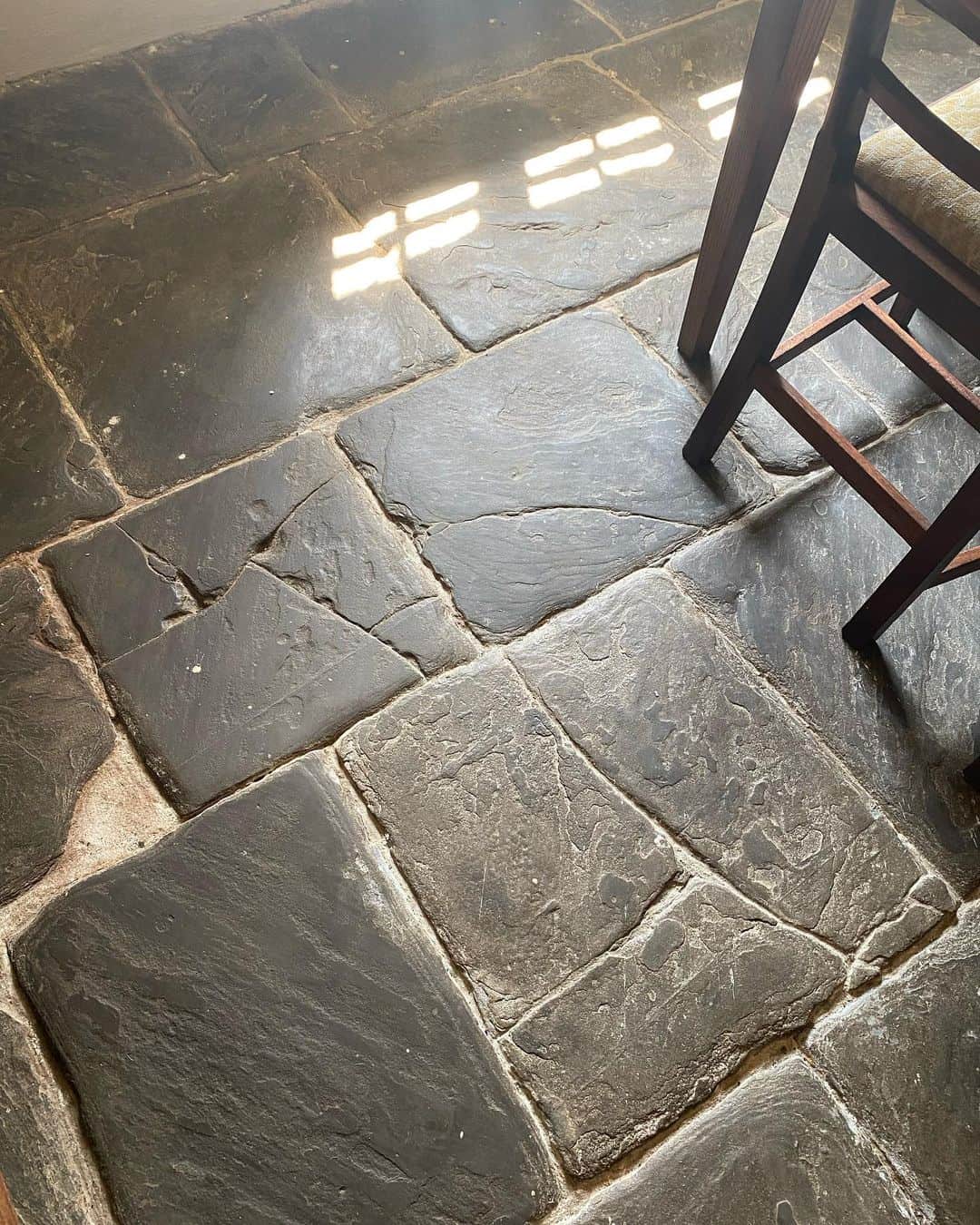
hiltonmarlton
Flagstones are large slabs that offer an antique look. Although they’re often used in patios, they can also be used to complement classically-designed homes.
Famous examples of flagstone include:
- Banas Grey or Brown
- Colorado Red
- Owen Sound Black or Eramosa
- Vermont Slate
Tip: Using irregularly-shaped flagstone tiles can surely add a unique touch to your hallway, kitchen, or bathroom.
Although flagstones’ durability is a plus, it also puts them at quite a disadvantage. They’re heavy and, therefore, harder to install. If you decide to get professional help, you will need to pay about $13 to $16 per sq. ft.
Do note that this does not include the cost of the flagstone itself. For this, you will need to pay $2 to $6 (lower end) to $10 to $15 per sq. ft.
7. Travertine
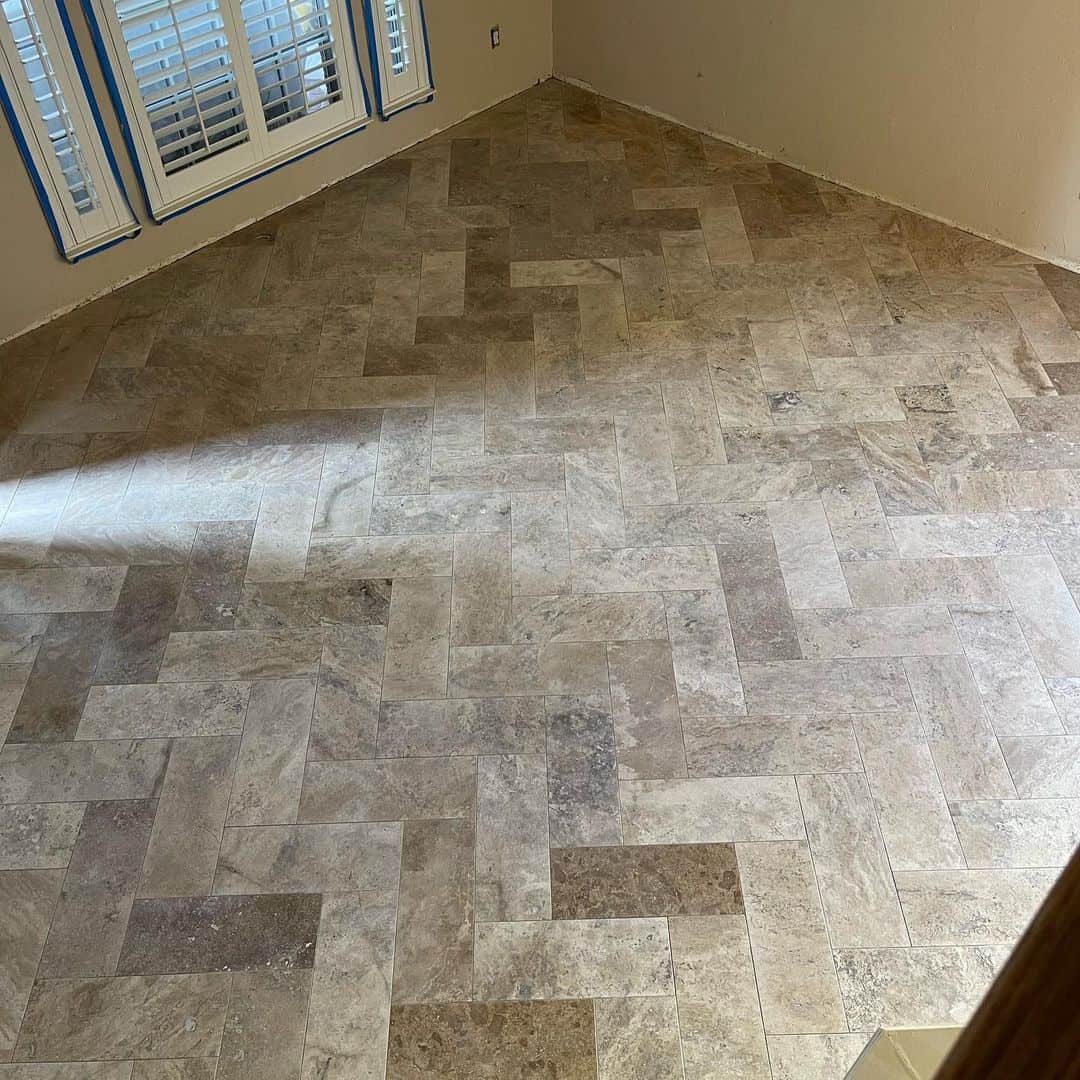
cardenasflooring
Travertine is a sturdy and slip-resistant stone flooring option. It’s also cheaper than granite or marble, which makes it ideal for low-budget projects.
Depending on your plans, you can choose from any of these four options:
- Polished travertine. As the name suggests, this travertine is quite shiny – thus giving it a more sophisticated look.
- Brushed travertine. This tile has a matte surface made possible by a unique wire treatment.
- Honed travertine. This variant, which has a matte-glossy look, is created by buffing the unfinished side of the stone.
- Tumbled travertine. This rustic-looking tile is made by tumbling, which results in rough edges. They are then honed to perfect the look.
While travertine has many outstanding characteristics, it also has some cons.
For example, it can easily be destroyed by acidic liquids. As such, it’s not recommended for kitchens, as coffee or vinegar spills may destroy the stone’s calcium carbonate composition.
Additionally, it needs a stone sealer every 3-5 years to help maintain its moisture and stain-resistant properties.
Travertine tends to maintain a lower temperature as well. While this quality makes it perfect for warmer areas, it’s not necessarily suitable for colder ones.
Travertine flooring is quite expensive too. It will cost you about $15 per sq. ft. (labor not included.)
8. Porcelain
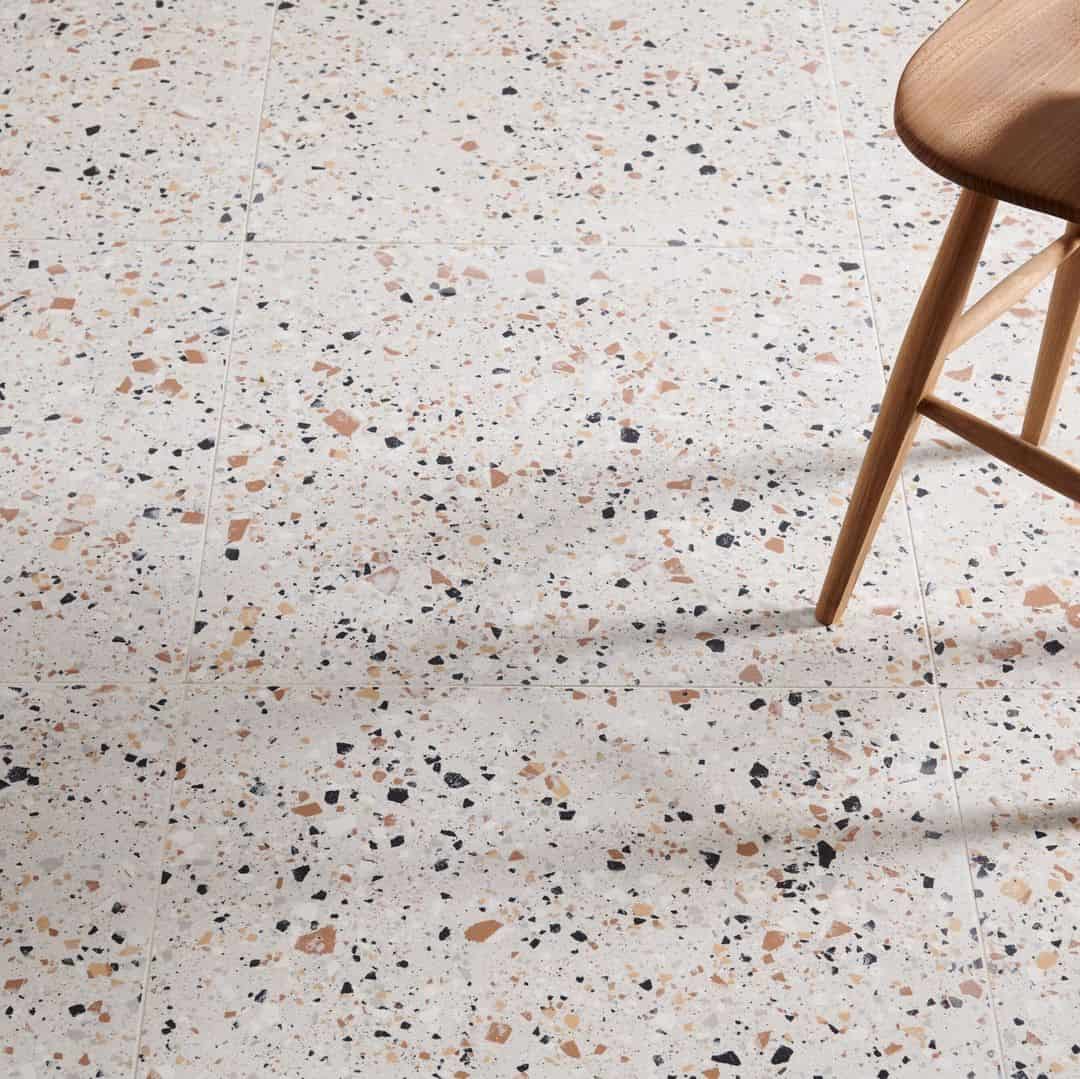
floorsofstone
Porcelain tiles are made from white clay and petuntse stone. It’s versatile, for it can mimic many surfaces – including wood, bamboo, steel, granite, or marble.
Additionally, porcelain is durable, water/stain-resistant, and relatively easy to clean. As such, it’s an excellent choice for kitchens, bathrooms, and hallways.
And while this stone makes for fantastic flooring, it does come with some limitations. It’s hard to install, as it’s pretty heavy yet prone to breakage.
Porcelain flooring materials cost anywhere from $5 to $25 per sq. ft. You also need to grout it before sealing, which means you’ll need to pay more on top of the said costs.
9. Onyx
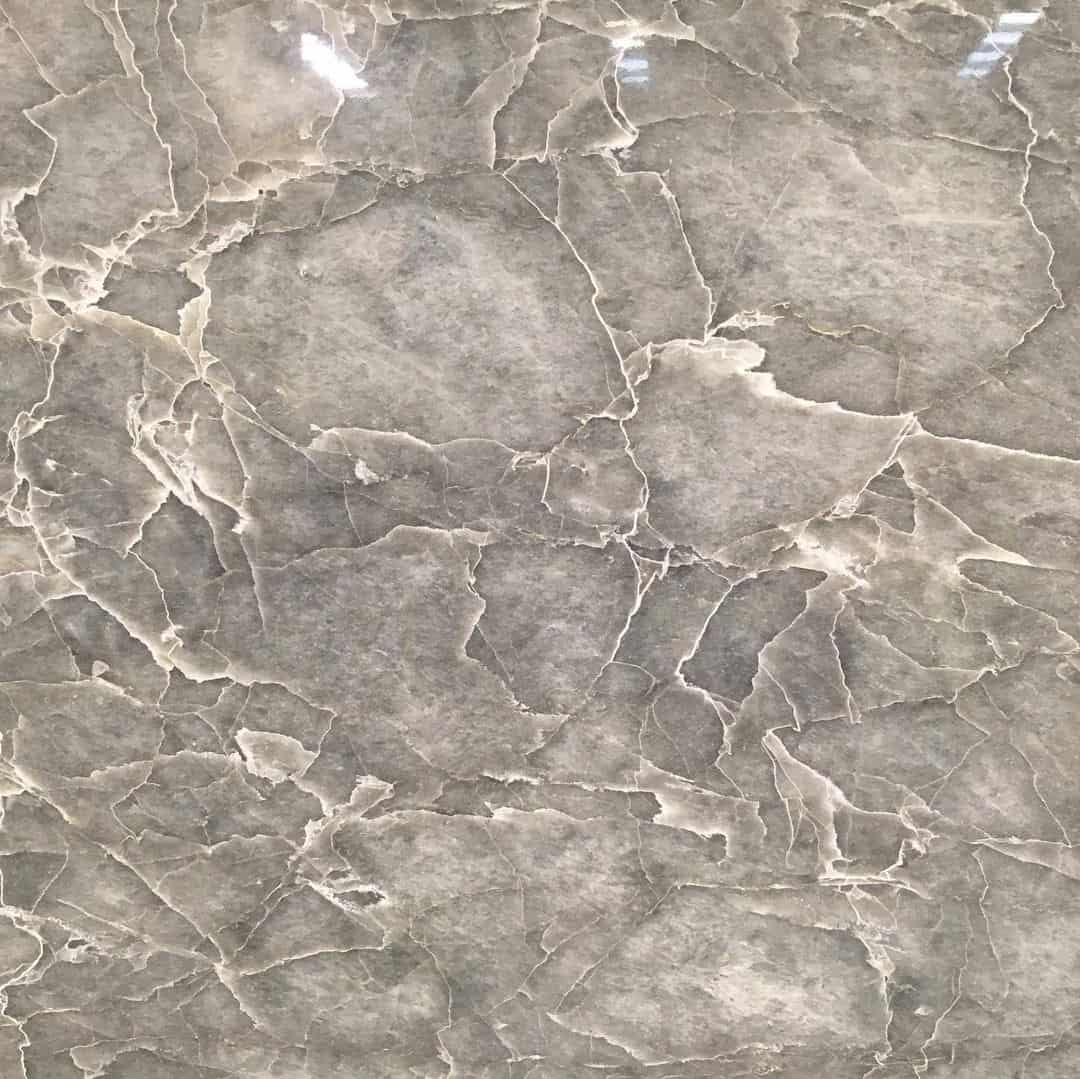
tingidastone
Onyx, which is often extracted from caves, is made from quartz crystals and solid stone. These properties make for the onyx’s colorful and semi-transparent properties.
While onyx does make an excellent addition to your home, it is porous and reacts to acidic liquids readily. It also stains immediately, which means it’s meticulous to maintain.
Onyx is also a little expensive, with prices starting at $16 per sq. ft. This does not include the cost of fiberglass, which is needed to support the fragile onyx tiles.
That said, onyx floors can last for a century (or more) with proper care and maintenance.
10. Quartz

epoxy.kyle.sfc
Quartz is a white mineral that makes for fantastic kitchen and bathroom flooring. It’s durable and, as such, could withstand heavy foot traffic. It’s stain-resistant as well, making it particularly easy to clean.
Given these qualities, it’s not surprising that quartz can be a little pricey. In fact, it can cost you anywhere from $45 to $75 per sq. ft.
Granted that you’re willing to pay this cost, you still need to be wary of quartz’s drawbacks. While it is resistant to slipping, this may still happen if you don’t clean the spills immediately.
Quartzite may also crack due to immense heat, so it’s best to use this flooring in indoor areas only.
11. Mosaics
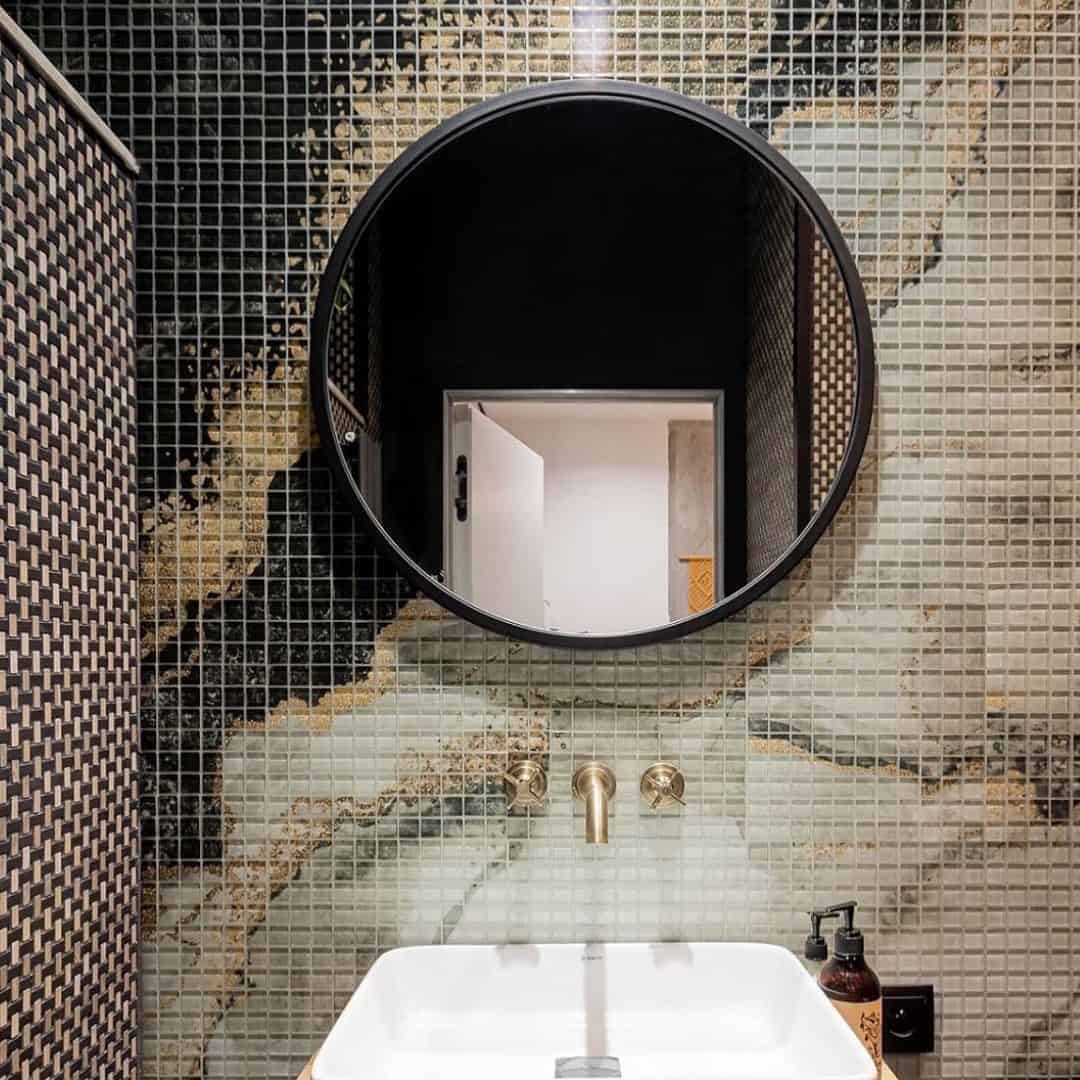
leoceramikapoland
If you want to get the best of several worlds, mosaic flooring should be your top choice. It’s made from marble, stone, and glass squares that are gathered together to create unique designs.
As mosaics are made from sturdy materials, they can easily resist wear and tear. However, it can be prone to staining and grime build-up. Some mosaics may also yield uneven surfaces, so you need to be careful when treading them.
Since mosaics feature many additions, it’s not surprising that it comes with a steep price tag: $18 to $31 per sq. ft.
Conclusion
There are several types of stone flooring, namely:
- Limestone
- Sandstone
- Slate
- Marble
- Granite
- Flagstone
- Travertine
- Porcelain
- Onyx
- Quartz
- Mosaics
As they come in various designs – and price points, too – you’re sure to find suitable stone types for your redecorating needs.